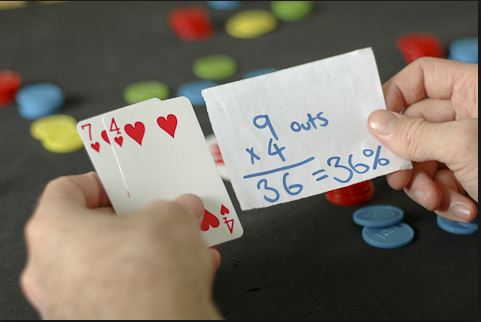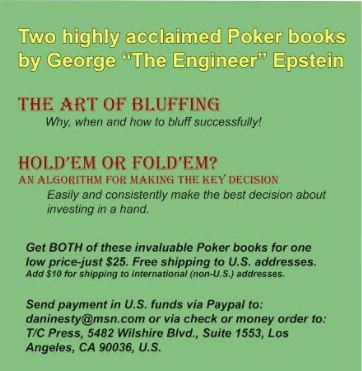Playing Texas Hold’em, after the flop most often you will have a drawing hand. Generally, you’ll need to improve to a made hand to win the pot. Studying your hole cards and the board, you identify those cards remaining in the deck that will complete your hand. These are your “outs.” How many do you have? The more outs you have, the more likely you will be to complete your hand. Of course, we are talking about “good outs” – those that will most likely make you the winner.

As the dealer places the turn card face-up on the board, the number of outs may change – sometimes substantially. That could make a big difference in how you continue playing your hand to see the river. Of course, this holds true whether you’re playing poker in a brick and mortar casino, online poker room, or even at one of the best new casino sites Canada has to offer.
Let’s analyze a limit hold’em example.
From late position, you start with Ks-Js in the hole – a good starting hand, readily satisfying the Hold’em Algorithm criteria. (See ad below for Hold’em or Fold’em? – An Algorithm for Making the Key Decision.)
The flop comes down: 8s-Jd-3c. Studying your hand, you now hold top pair on the board. If you are fortunate, it may well be the best hand in play at that point. But, if an opponent holds a higher pocket pair in the hole, you are in bad shape. If that’s the case, you have only two outs to catch trip Jacks.
With four opponents still in the hand, it’s likely that your pair of Jacks is still in the lead; but you cannot be sure. After two checks, a middle-position player opens the betting. He is a rather loose-aggressive player, so your hand may still be the best. (Remember, he has no idea what you hold in the hole and can only guess.)
You decide to make a raise for information and, especially, to thin the field so your pair of Jacks will have a much better chance of holding up to the end. An early-position player and the opening bettor call your raise.
The turn is the deuce of spades. Now, in addition to the pair of Jacks, you also have four cards to the King-high spade flush. Quickly sizing up the situation, there are nine more spades remaining in the deck that will give you the second-nut flush – a very strong made hand and even more likely to take the pot. Adding those 9 outs to the other two, you now have 11 good outs, any one of which is almost certain to take the pot.
With only the river card to come, using the 4-2 Rule, your card odds are less than 4-to-1 against connecting. Quickly glance at the pot. There is about $80 in chips waiting for you. The pot odds are well above 4-to-1, giving you a Positive Expectation even if an opponent were to have a pair in the hole higher than your pair of Jacks.
After the two remaining opponents check to you, you decide to make a value bet, expecting to increase the size of “your” pot. It’s sort of a semi-bluff; so you use the Esther Bluff tactic for more leverage. (again, Ref. The Art of Bluffing; see ad.) Both decide to fold their hands. You rack up a very nice pot. Ecstasy!








Comments